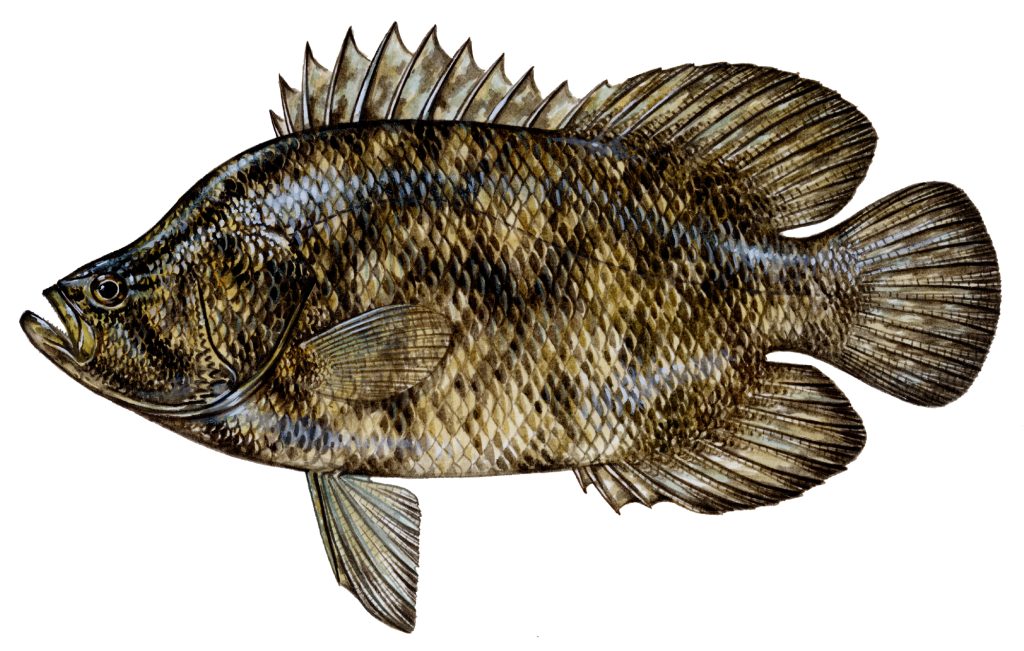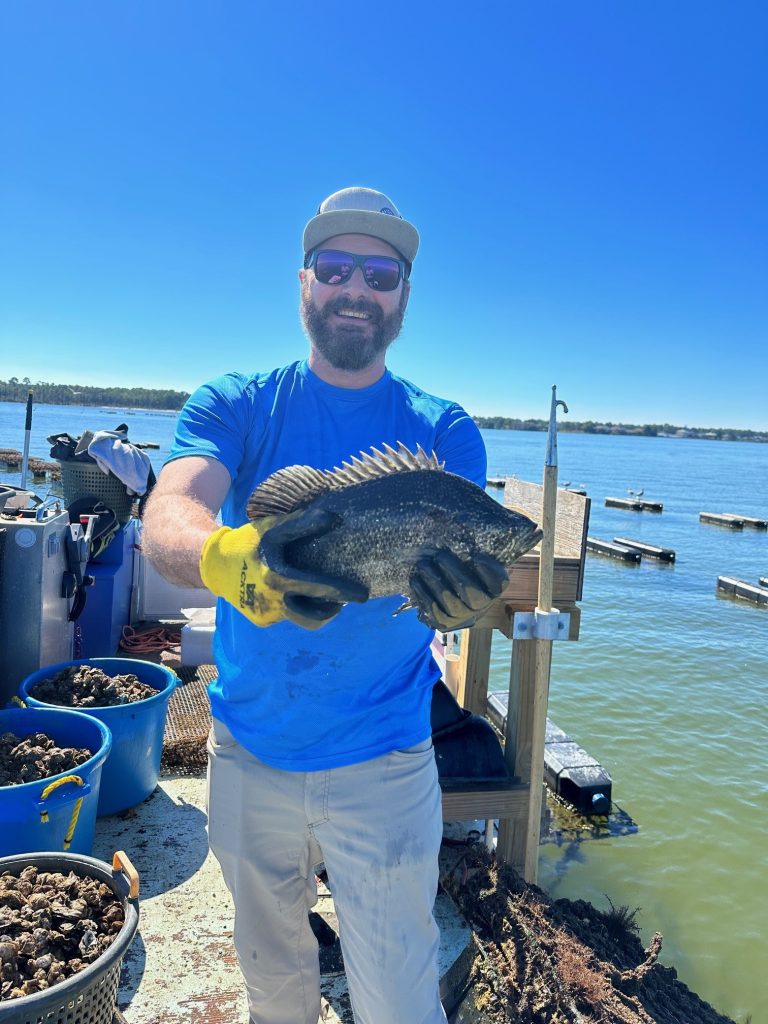The Atlantic Tripletail (Lobotes surinamensis) is a very prized sportfish along the Florida Panhandle. Typically caught as a “bonus” fish found along floating debris, the tripletail is a hard fighting fish and excellent table fare. Just as the name implies, this fish is equipped with three “tails” that help aid it in propulsion; and also help contribute to their strong fighting spirit. In addition to the caudal fin, tripletail have very pronounced “lobed” dorsal and anal fin soft rays that sit very far back on the body, giving it the appearance of three tails (triple-tails).
Tripletail are found in tropical and subtropical seas around the world (except the eastern Pacific Ocean) and are the only member of their family found in the Gulf of Mexico. Tripletail can be found in all saltwater environments, from the upper bays to the middle of the Gulf of Mexico. In the Florida Panhandle, tripletail begin to show up in the bays beginning in May and can be found up until October/November. They are masters of disguise, usually found floating along floating debris, crab trap buoys, navigation pilings, and floating algae like Sargassum. When tripletail are young, they are able to change their colors to match the debris, albeit it is usually a variation of yellow, brown, and black. Adult tripletail can change color as well, but the coloration is not as vibrant as the juveniles. Floating alongside debris and other floating materials protects them from predators and gives them food access. Small crustaceans, like shrimp and crabs, and small fish will gather along the floating debris, looking for protection, giving the camouflaged tripletail an easy meal.
Tripletail are opportunistic feeders that are what I classify as “lazy hunters.” Tripletail will hang out along any floating debris and wait for the food to come to them. They typically will not chase their prey items too far and will abandon the hunt if they expend too much energy. Since they are opportunistic feeders, their diet varies widely, but they cannot resist a baby blue crab, shrimp, or small baitfish like menhaden (Brevoortia patronus) that might visit their floating oasis. When further offshore, it is not uncommon to find many tripletail “laying out” on sargassum or floating debris. I personally have seen a dozen full-sized tripletail inside of a large traffic barrel 25 miles offshore that saved a skunk of a deep-dropping fishing trip.
When targeting tripletail, anglers will typically sit at the highest point of the boat (some anglers have towers for spotting tripletail) and cruise along floating crab trap buoys, pilings, and sometimes oyster farms looking for Tripletail. These fish are very easily spooked, and a slow, quiet approach is best. Once in casting distance, toss your preferred bait (I typically want to have baby crabs or live shrimp when targeting tripletail) close to the floating structure, but not too close to spook the fish. You can usually watch the fish eat your bait (another added bonus) and once you set the hook, the fight is on! In the state of Florida, tripletail must be a minimum of 18 inches and there is a daily bag limit of 2 fish per person. Be very careful handling tripletail as they have very sharp dorsal and anal fins and their operculum (gill cover) is also very sharp with hidden spines.
So next time you’re out fishing and see something floating, make sure you give it a good look over. There might be a camouflaged tripletail that you can add to your fish box!
- Aquaculture in the Southern United States: Part 4-Louisiana & Mississippi - October 29, 2025
- Aquaculture in the Southern United States: Part 3 – Florida and Georgia - September 8, 2025
- Aquaculture in the Southern United States: Part 2 – Alabama & Arkansas - August 25, 2025




